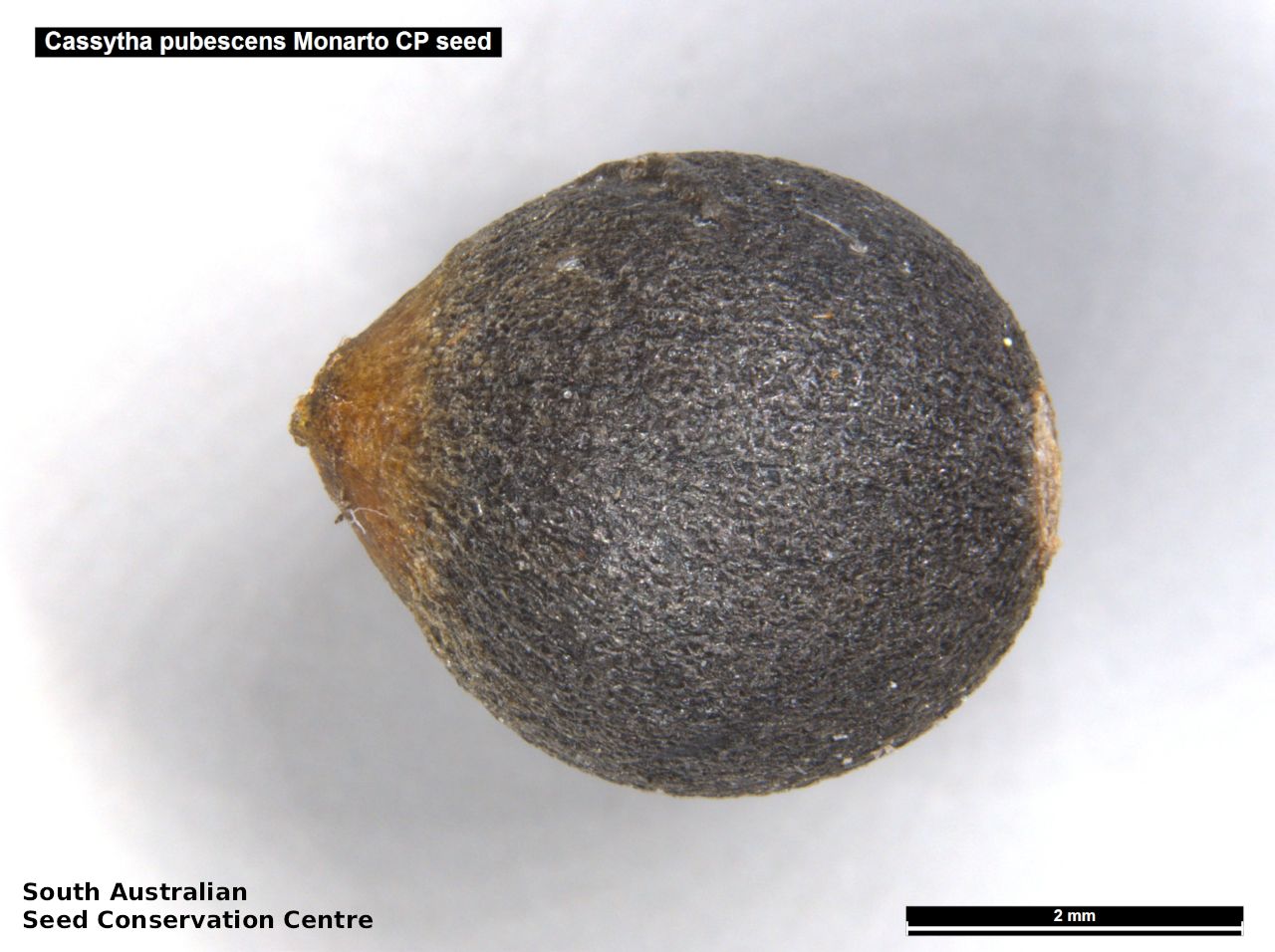















Botanical art
Prior names
Cassytha tepperiana
Cassytha piligera
Etymology
Cassytha from the Greek 'kasytas' or 'kadytas', a name for a parasite to which this genus bears a strong resemblance and thought to have been dodder (genus Cuscuta). Pubescens from Latin meaning downy, short hairs, referring to its pubescent stems and leaves.
Distribution and status
Found southern South Australia growing in open forest. Also found in Queensland, New South Wales, Victoria and Tasmania (and New Zealand). Native. Common in South Australia. Common in the other States.
Herbarium regions: Eyre Peninsula, Northern Lofty, Murray, Yorke Peninsula, Southern Lofty, Kangaroo Island, South Eastern, Green Adelaide
NRM regions: Adelaide and Mount Lofty Ranges, Eyre Peninsula, Kangaroo Island, Northern and Yorke, South Australian Murray-Darling Basin, South East
AVH map: SA distribution map (external link)
Plant description
Weak to robust parasitic twiner with terete stems to 1.5 mm thick, striate, pubescent to glabrescent, yellow-green to reddish, younger parts, pubescent or woolly with hairs white or red. Leaves reduced, triangular-ovate, to 4 mm long and 2 mm wide, woolly to glabrescent. Inflorescence a single, or often paired spike with 2-10 white flowers. Sepals triangular to ovate, pubescent to glabrescent, honey-yellow to brown, black in fruit, petals ovate to obovate, pubescent, hairs mostly grey but sometimes black, yellow or red. Flowering between December and April. Fruits are grey, green-grey to green-red fleshy globular drupe to 10 mm long and 9 mm, glabrescent to heavily pubescent with indumentum mixed red and white. Seeds are ovoid to globular, black to 4 mm diameter. Seed embryo type is linear under-developed.
Seed collection and propagation
Collect seeds between March and June. Collecting mature fruits, those that are soft, grey, green-grey to green-red and have a hard woody seed inside. Place the fruits in a bucket of water and rub with your hands to remove the soft flesh. Remove any seeds that are floating. These will be empty seeds. Drain the water and keep only the hard seeds at the bottom. Place the seeds on paper towel and leave to dry. Store the seeds with a desiccant such as dried silica beads or dry rice, in an air tight container in a cool and dry place.